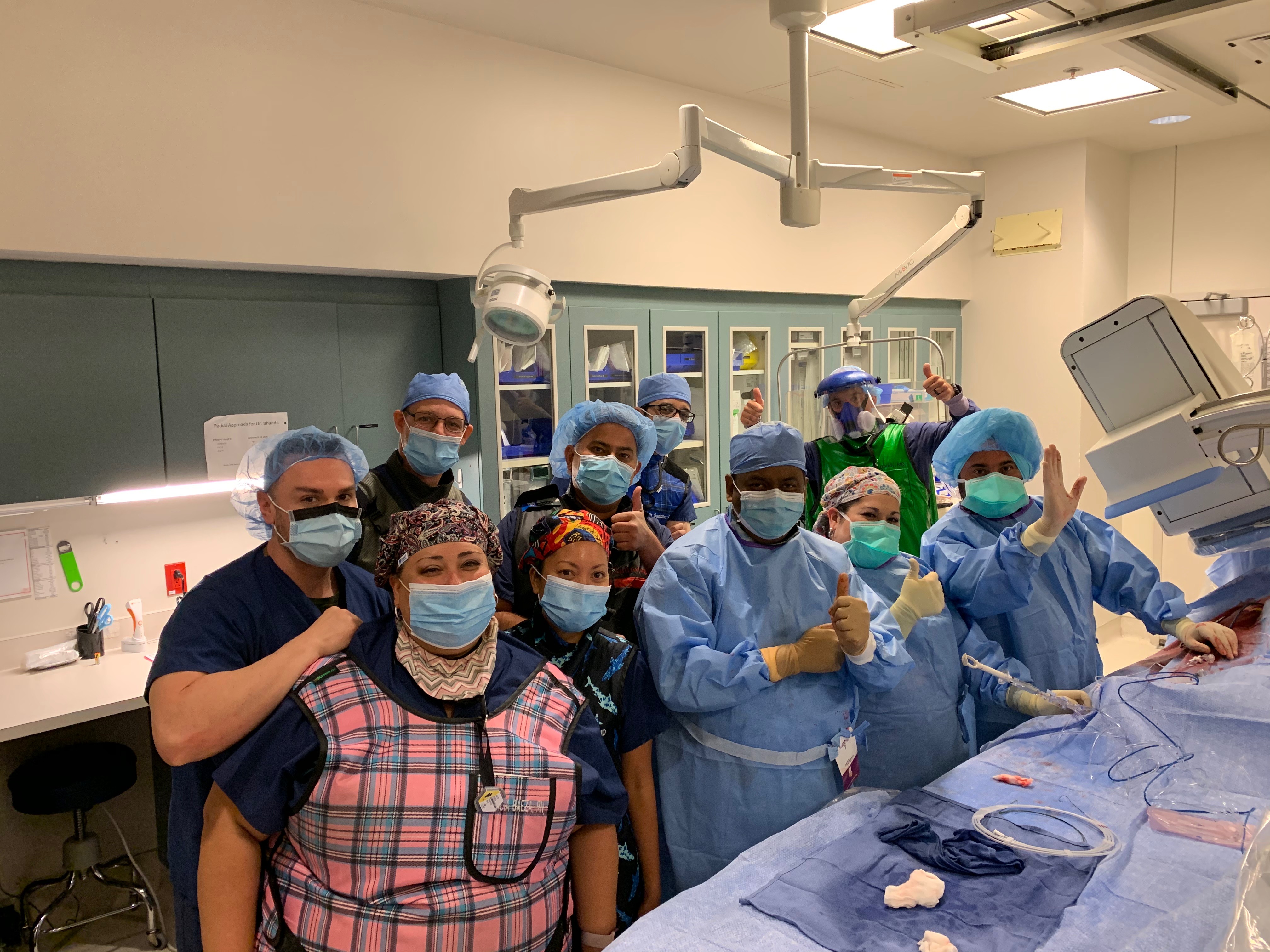
Structural Heart Program
Kern County Structural Heart Specialists
The Structural Heart Program at CCMC provides Kern County with access to a multidisciplinary team performing minimally invasive treatments on patients with advanced and complex valvular and structural heart disease. This state-of-the-art program is new to the Central Valley and has successfully delivered the best possible outcomes for every patient treated by providing a viable alternative for patients who would have otherwise undergone open-heart surgery.
Conditions We Treat
Structural heart disease in patients presents as congenital or acquired defects in the heart's valves, wall, or chambers. The following are conditions treated:
- Aortic Stenosis
- Atrial Septal Defects (ASD)
- Left Atrial Appendage Closure
- Mitral Valve Issues
- Patent Foramen Ovales (PFOs)
Diagnosing Structural Heart Disease
An important first step to treatment is using diagnostics to effectively understand the structure of each patient’s heart and offer the best treatment options with optimum outcomes. We typically use the following diagnostic tools to diagnose structural heart disease:
- Angiogram
- Cardiac Catheterization
- Coronary CT
- Angiography
- Echo
- EKG
- TEE
Treatment Options
The structural heart team work together in a collaborative approach to develop the best treatment plan for each patient and deliver the best care with the most optimal results. The following treatment options are offered:
Transcatheter Aortic Valve Replacement (TAVR)
The Aortic valve is responsible for allowing blood to flow forward from your heart to your body. As this valve becomes stenotic “tight” it requires the heart to pump harder. Over time this leads to the heart muscle failing and eventually death. Previously, the only treatment option was open heart surgery. Now we are pleased to offer Transcatheter Aortic Valve Replacement (TAVR), which is a minimally invasive, catheter-based procedure to replace the diseased aortic valve in patients with severe aortic stenosis.
TAVR is performed in a Cath Lab by an interventional cardiologist and a cardiac surgeon and uses a catheter to deliver a new valve to the heart. The valve can be delivered via a blood vessel in the patient's groin (femoral artery). Once the new valve is perfectly positioned, it is opened, pushing aside the flaps of the original defective valve and effectively replacing it.
Patients with severe aortic stenosis but at high risk for surgical aortic valve replacement are good candidates for this procedure.
Left Atrial Appendage Occlusion (Watchman)
Atrial fibrillation (AF) is a heart condition where the upper chambers of the heart (atria) beat too fast and with chaotic rhythm (fibrillation). This condition can cause blood to pool and form clots in an area of your heart called the left atrial appendage (LAA), which can travel through an artery to the brain and cause a stroke. Patients with Atrial Fibrillation are at an increased risk of stroke. The main treatment option for patients with Atrial Fibrillation is lifelong treatment with warfarin (blood thinners).
Now patients that are considered suitable for warfarin have an alternative treatment option. The Watchman Left Atrial Appendage Closure (LAAC)Device is an implant-based alternative to warfarin, where the device is implanted in the left atrial appendage of the heart to permanently close off this small pouch and keep harmful blood clots from entering the bloodstream. By closing off the left atrial appendage, which is the source of more than 90% of stroke-causing blood clots that form in people with non-valvular Atrial Fibrillation, the risk of stroke may be reduced and, over time patients are able to stop taking warfarin.
A Watchman Implant is a one-time implant inserted by guiding it into your heart through a flexible tube (catheter) inserted through a vein in your upper leg. The implant does not require open heart surgery and does not need to be replaced. Once the position in your heart is confirmed, your doctor will release the implant and leave it permanently fixed in your heart. After a few months you may be able to stop taking warfarin.
Mitral Valve Repair (MitralClip)
Mitral regurgitation (MR) is the most common type of heart valve insufficiency affecting nearly one in ten people aged 75 years and older. Mitral Regurgitation is a progressive and life threatening condition that occurs when the leaflets of the mitral valve do not close completely, causing blood to flow backwards and leak into the left atrium of the heart. Patients with severe mitral regurgitation have 50% of their blood pushed backwards into their lungs with each heart beat. Over time this will lead to heart failure. If heart failure medications fail to correct this condition, the patient will suffer and have a limited quality of life and decreased lifespan.
Mitral Valve Repair (Mitral Clip) is a minimally invasive procedure that may be an option for patients with Mitral Regurgitation who are too sick for surgery. Unlike surgery, this procedure does not require opening the chest and temporarily stopping the heart. Doctors place a thin tube (catheter) through the skin into a large vein in the leg to reach the heart. A clip is then implanted onto the center of the mitral valve (the valve between the left atrium and left ventricle of the heart). This allows the heart valve to close properly and prevents blood from flowing backwards.
Structural Heart Team
Our team of specialists include board certified cardiologists, interventional cardiologists, cardiac surgeons, radiologists, anesthesiologists, nurses and our structural heart coordinator. This clinical expertise is enhanced by the team’s access to the best in medical technology, including a state-of-the-art Cardiac Catheterization Lab at Bakersfield Heart Hospital. This program offers minimally invasive alternatives to open heart surgery for patients in the Central Valley.

